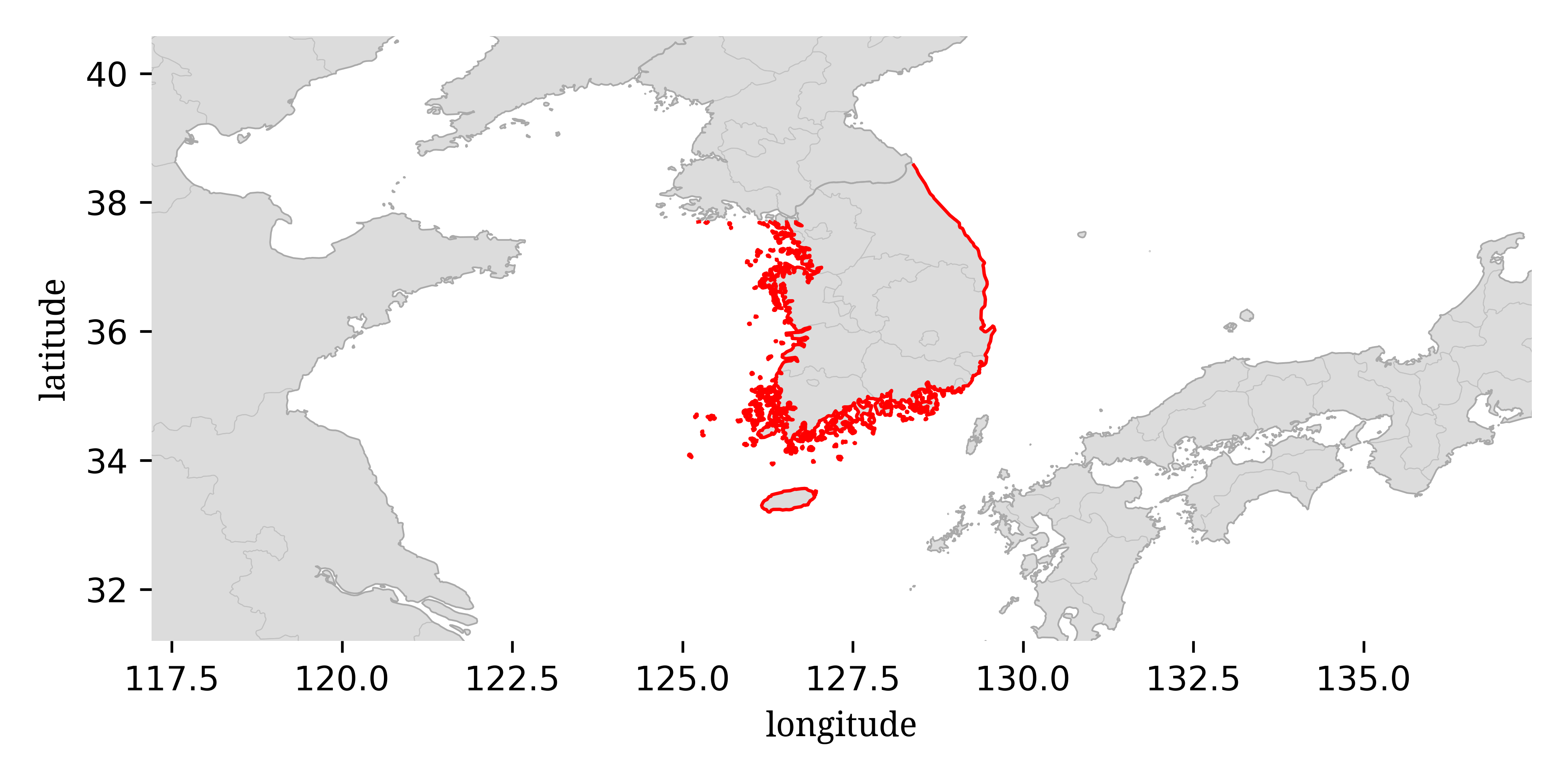
This guide is designed for identification “in the field” where you might be looking at live crabs by eye or through binoculars or from photographs. I will generally try to avoid characters that will require you to physically catch the crab, although I may mention a few for secondary verification. It does not include the more strict taxonomist-style characters that may only be visible under a microscope or via dissection. It is also assumed that the individuals are living, as death (and even capture) can cause dramatic color change.

This is a guide to the fiddler crabs of South Korea. It is not known if fiddler crabs extend as far north as North Korea, but if they do, this guide would likely be equally applicable. There are only two species found in South Korea, which are readily distinguishable:
A number of features can be used to distinguish among these species, but a good place to start is to look at the distance between the base of the eyestalks. Fiddler crabs tend to split into two groups, those with the eyestalks very close together (“narrow front”) and those with the eyestalks separated a bit more (“broad front”). One of these species Austruca lactea has a broad front, while the other Tubuca arcuata has a narrow front. Note that the carapace between the eyestalks appears pinched together in the narrow front species, but more trapezoidal in the broad front species.
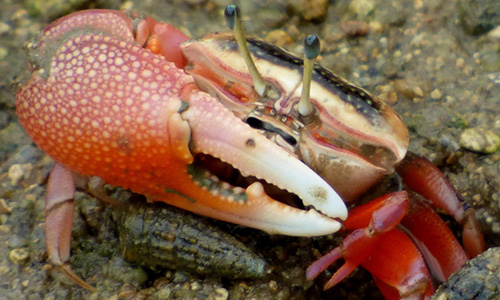
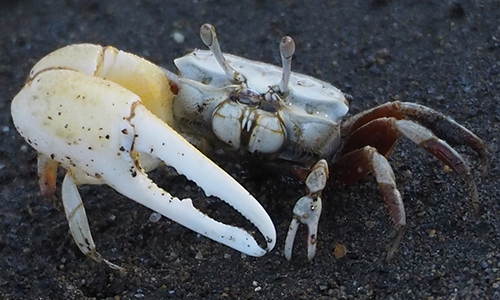
The carapace of Austruca lactea is generally either white or white with black (dark brown) markings, generally a small scattered speckling of black, frequently with a few thin stripes (kind of like a Rorschach test). In rare occasions the carapace will be more black than white. The legs are generally either white or red (ranging from dark to bright). Eyestalks are generally white or gray. The major cheliped is generally entirely white, or with yellow extending from the arm up into the hand of the claw, but usually still white along the fingers.
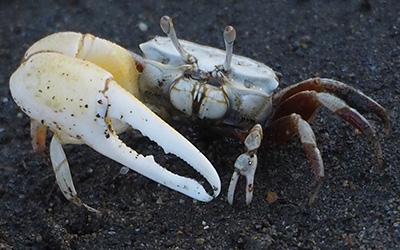

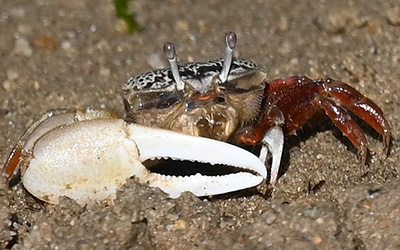
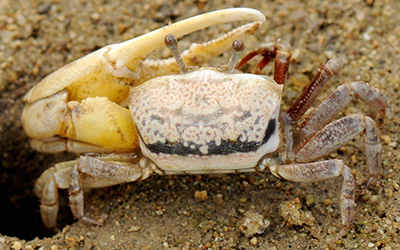
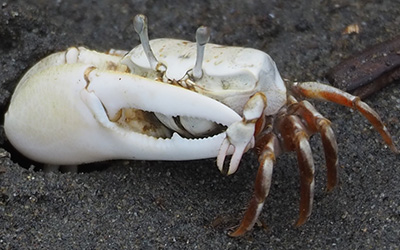
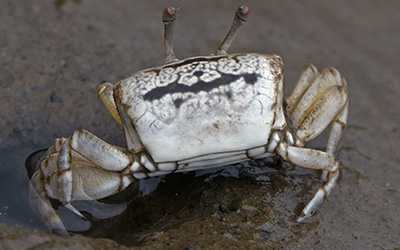
The carapace of Tubuca arcuata is usually a mix of white and black, sometimes red and black, although in some individuals it may appear more solid white, black, or red. The black markings tend to be in large patches, often with a large stripe across the middle of the carapace and a second stripe toward the back of the carapace. The black sections will often appear speckled with the background color. In rarer instances, the white may appear more as a pale blue, particularly in juveniles. They generally have yellowish eyestalks with dark eyes.
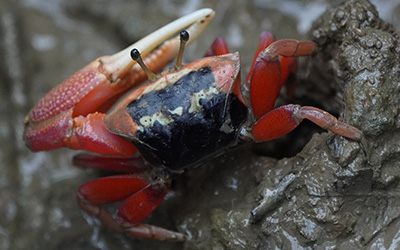
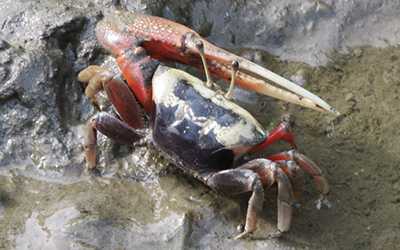
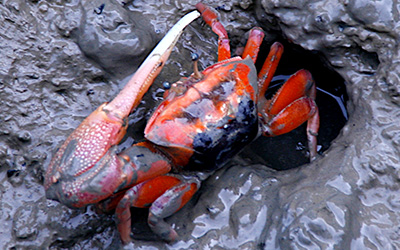

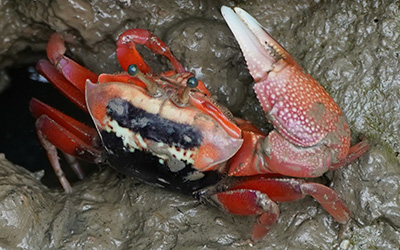
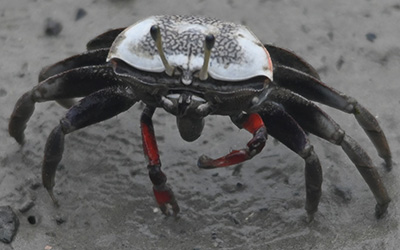
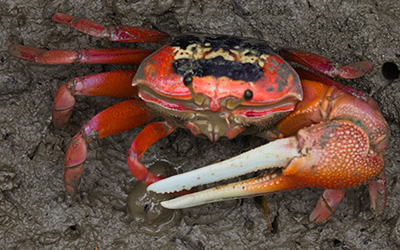
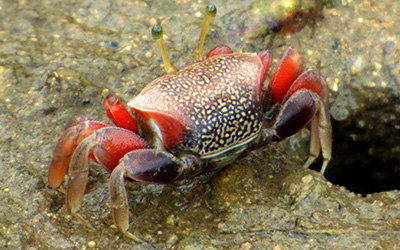
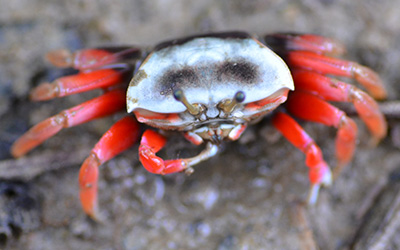
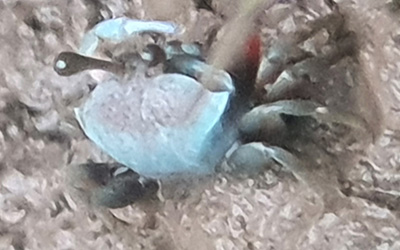
The limbs of Tubuca arcuata are usually red, sometimes black. The large claw is very robust, with distinct bumps on the outside. It is generally red, with white fingers. The fingers are usually distinctly curved and frequently meet with at the tips with flat inner surfaces. There will frequently be a distinct tooth about midway along the lower finger, and occasionally on the upper.